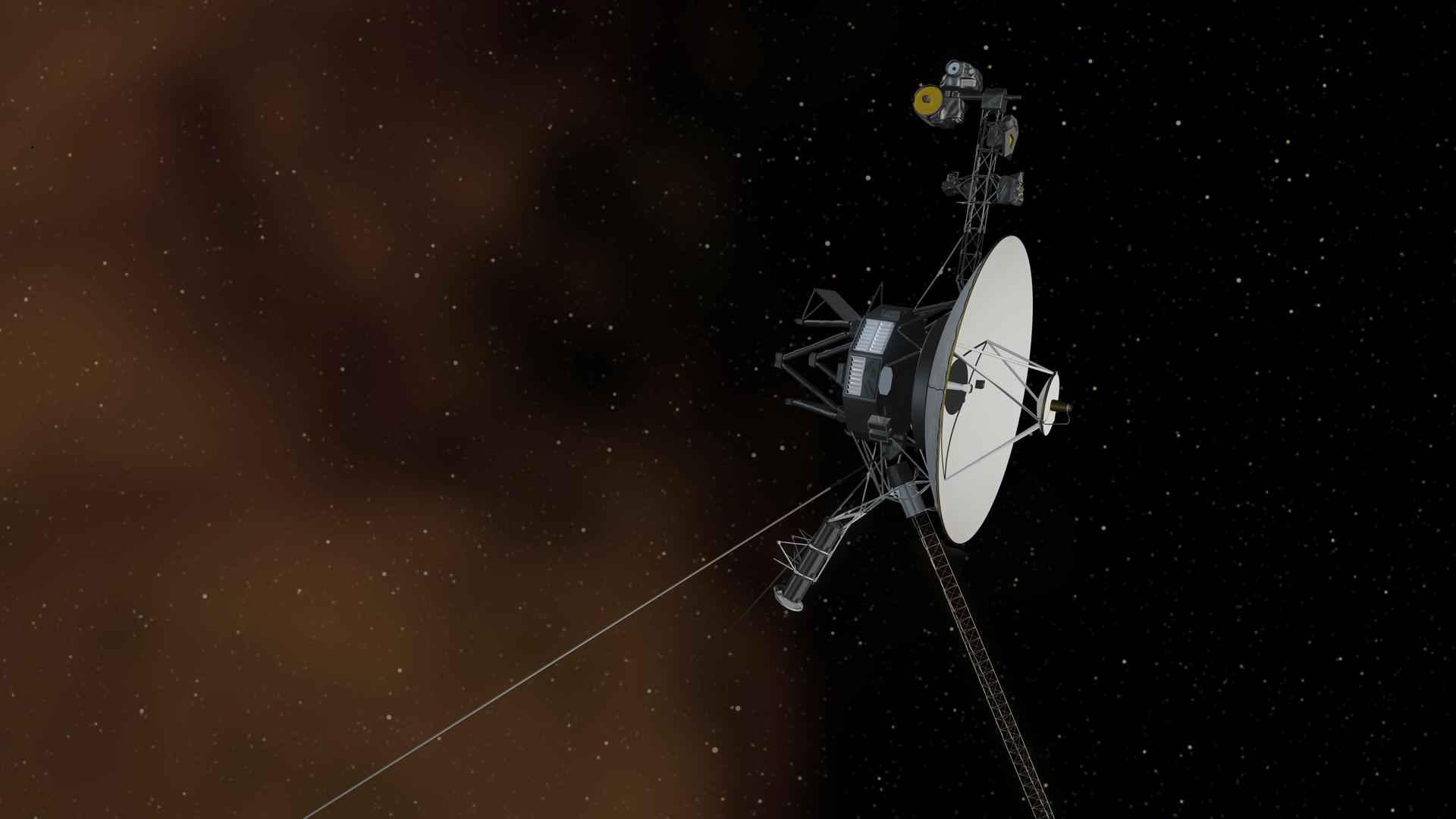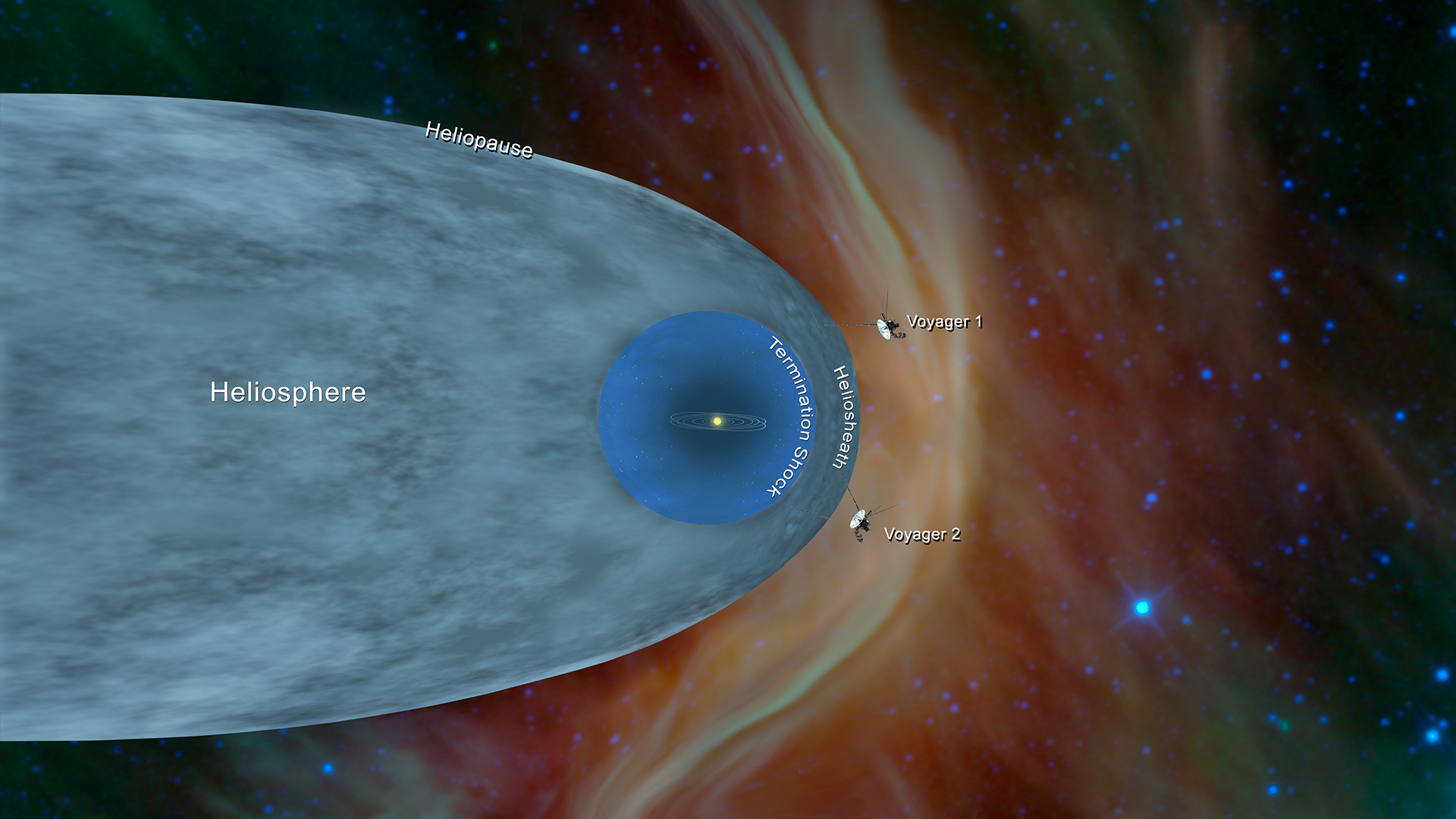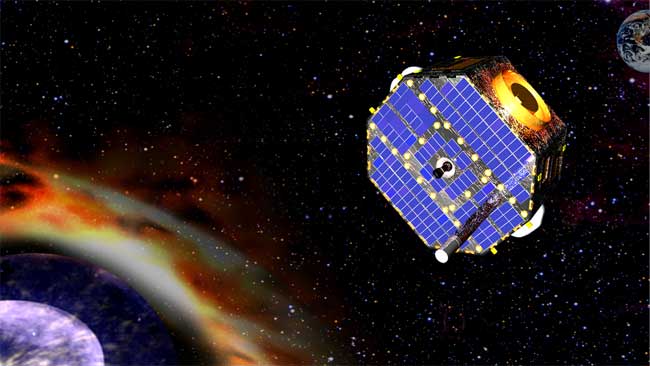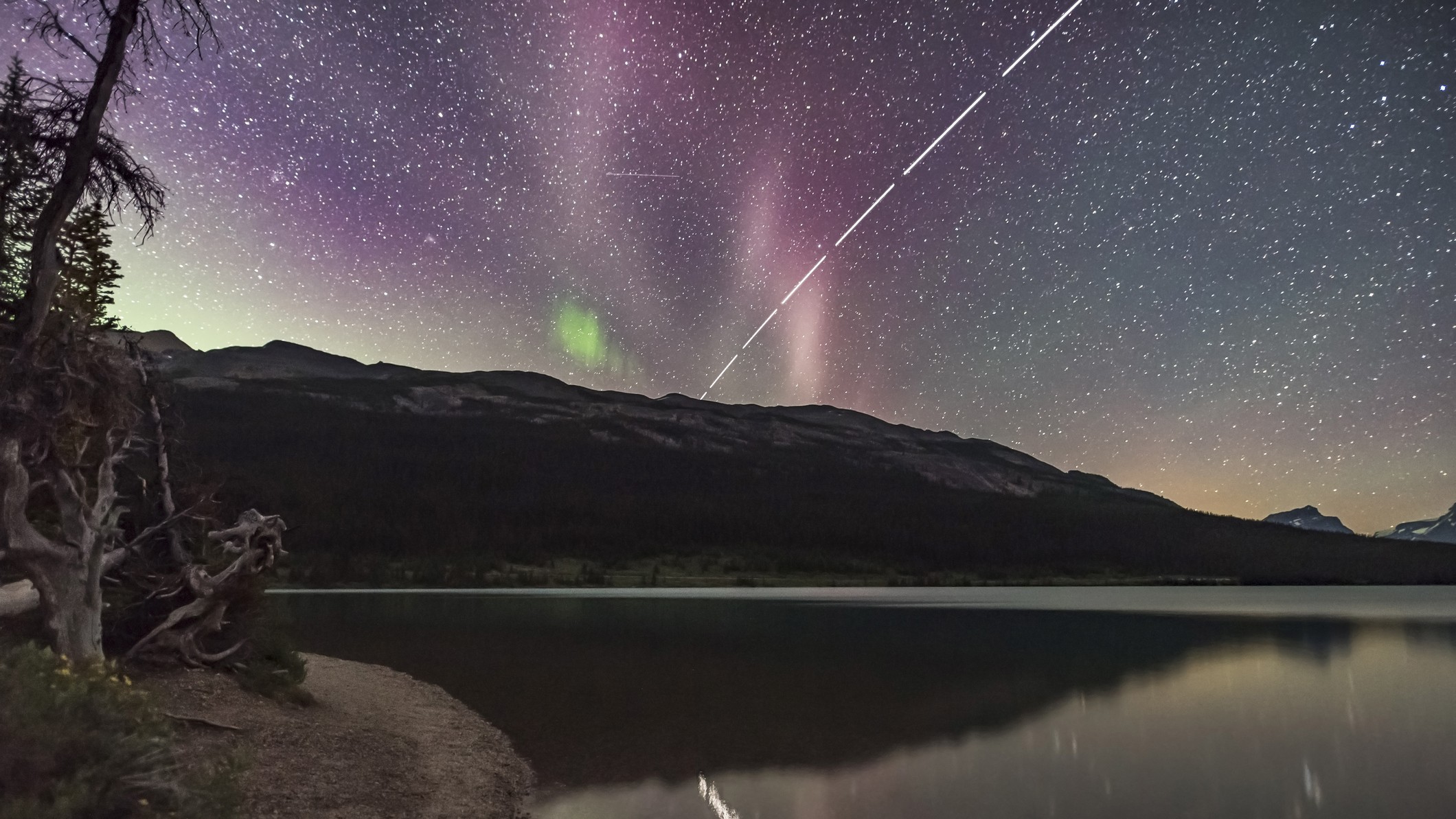Interstellar space: What is it and where does it begin?
Explore the interstellar medium here, with our ultimate guide.

Interstellar space is the area between the stars, but it is far from empty. It contains vast quantities of neutrinos, charged particles, atoms, molecules, dark matter and photons ranging from the highest-energy radiation to the sluggish light of the cosmic microwave background (CMB) albeit rather sparsely spread out.
According to the National Radio Astronomy Observatory (NRAO), the average distance between stars in the Milky Way galaxy is about 5 light-years, although they are more bunched up near the center of the galaxy than in the outskirts where the sun and Earth are located.
This means that there is a lot of space between the stars. We collectively call everything that is in this space the "interstellar medium", or ISM for short.
The composition of the ISM is broken down by the scientists at the Infrared Processing and Analysis Center (IPAC) at Caltech: the ISM is mostly composed of atoms of hydrogen (~90%) and helium (~8%), which are the two most common atoms in the universe having been created in the Big Bang, but there are also other trace elements and molecules contributing no more than 2% of the ISM. These elements, heavier than hydrogen and helium, have all originated in the deaths of stars and have been blown into space. The more generations of stars there are, the more enriched in chemical elements the ISM becomes over time.
How far away is interstellar space?
The boundary to interstellar space is far away, but perhaps not as far as you might think. In fact, part of our solar system is in interstellar space.
How can this be? The definition of this interstellar space boundary is the region where the sun's magnetic bubble weakens and comes to an end. This magnetic bubble — known as the heliosphere — is filled with plasma (ionized gas). The heliosphere is blown by the solar wind that drags magnetic field lines out from the sun.
The plasma in the ISM imparts an inward pressure on the edge of the heliosphere with its own magnetic fields and charged particles, leading to a complex and variable structure at the boundary. The solar wind starts to weaken from between 370–430 miles per hour (600–700 kilometers per hour) as it begins to come up against interstellar space and slows to about 62 mph (100 km/h). The point at which this occurs is called the Termination Shock. The region in the heliosphere beyond the Termination Shock where the solar wind continues to slow is called the heliosheath, and then the outer boundary of the heliosphere is called the heliopause. It's at the heliopause where the solar wind stops and gives way to interstellar space, approximately 11 billion miles (18 billion km) from the sun.
Breaking space news, the latest updates on rocket launches, skywatching events and more!
Have we traveled to interstellar space?
Only two active spacecraft have ever crossed the heliopause and entered interstellar space. These are NASA's Voyager 1 and 2 missions. Launched in 1977 they visited the outer planets before continuing on deeper into space. In 2005 JPL's Ed Stone, who was Voyager's project scientist before his retirement in 2022, announced that Voyager 1 had crossed the termination shock at a distance of 94 astronomical units (8.7 billion miles/14 billion km) from the sun.
NASA announced that Voyager 2 had followed suit in August 2007 at a distance of about 83 astronomical units (7.7 billion miles/12.4 billion km). Voyager 1 and Voyager 2 are headed in different directions, and the fact that they crossed the termination shock into the heliosheath at different distances from the sun suggests that the heliosphere is not symmetrical around the solar system, but is squashed. This shape is created by the balance of the strength of the solar wind outwards, and the pressure of the ISM on the heliosphere, particularly in the direction of the sun's motion through space.
Then, NASA announced that on August 25, 2012 Voyager 1 crossed the heliopause and became the first spacecraft to leave the sun's influence and enter interstellar space. It did so at a distance of 121 astronomical units (11 billion miles/18 billion km) from the sun, which is in the 'Scattered Disk' of comets near the edge of our solar system. NASA also revealed that Voyager 2 crossed the heliopause and entered interstellar space on November 5, 2018, at a distance of 121 astronomical units (11.3 billion miles/18.3 billion km).
But how do you know when you're in interstellar space? The evidence that both spacecraft had crossed the boundary came in the form of changes to the plasma environment around them, in particular measuring a drop in the number of solar wind particles and an increase in the number of galactic cosmic rays from outside the heliosphere.
What is interstellar space made of?
There is structure to the ISM, even around the solar system.
The Solar System is currently passing through what astronomers call the Local Interstellar Cloud, which is a wispy cloud of neutral hydrogen gas about 30 to 40 light-years across described in greater detail by Jonathan Slavin of the Harvard–Smithsonian Center for Astrophysics. There are other clouds nearby too, and we and all these clouds exist in the "Local Bubble", which is hundreds of light-years across and blown relatively clear of gas and dust by ancient supernovae explosions from 14 million years ago, according to research led by Harvard's Catherine Zucker. Voyager 2's measurements of the magnetic field in the Local Interstellar Cloud show it to be stronger than expected, but still incredibly weak — millions of times weaker than a fridge magnet — and that it experiences some turbulence, resulting in the magnetic field orientation being tilted by 30 degrees to the plane of the galaxy.
The magnetic field of these interstellar clouds is part of the overall galactic magnetic field; every galaxy has its own intrinsic magnetic field, the origins of which are not well understood.
It's tempting to think of the Local Interstellar Cloud as being like a fog, but it is very diffuse. According to Professor Barbara Ryden of Ohio State University, the ISM's density can get as low as 0.1 atoms per cubic centimeter (although in the bigger nebulae, the density can reach 10,000 atoms per cubic centimeter). Compare this to the density of air on Earth, which is 27 million trillion (10^19) molecules per cubic centimeter.
Almost all the medium in interstellar space — about 99% — is composed of gas, with just 1% being in the form of dust and ice particles. Even though the dust component is minor, it can have a dramatic effect that astronomers call "reddening", or at its most severe, "dust extinction".
Dust partially absorbs visible wavelengths of light. So when light from a distant object has to pass through the dusty spiral arms of our galaxy, or through the dust in interstellar space, it becomes dimmer and redder, as described by astronomers at the Swinburne University of Technology. If there's enough dust it can block an object's visible light completely.
While dust is problematic for visible light observations, infrared light can pass straight through it, which is why astronomers use the likes of the James Webb Space Telescope (JWST) to peer inside nebulas or see faraway galaxies.
What temperature is interstellar space?
Temperatures in the ISM can vary, depending on the local environment.
There's hot gas present everywhere with temperatures of millions of degrees, but because this gas is so sparse, it would not feel that hot if you were inside it. Hydrogen ionized by the ultraviolet light of nearby hot stars radiates at temperatures of tens of thousands of degrees. At the other end of the scale, clumps of molecular hydrogen gas can barely get above 10 degrees above absolute zero.
Investigating interstellar space
There's more than one way to study interstellar space, but Earth-based observations are difficult to achieve.
The heliosphere's magnetic field helps to protect our solar system from interstellar radiation that barrels towards us in the form of charged particles called "galactic cosmic-rays". However, because the strength of the solar wind, and hence the shape and strength of the heliosphere, waxes and wanes with the sun's 11-year cycle of activity, sometimes this galactic cosmic radiation can infiltrate the solar system.
Fortunately, Earth is defended by both its own magnetic field and atmosphere, which deflect and block the vast majority of this incoming interstellar radiation. However, this effective planetary defense makes observing galactic cosmic radiation on a consistent basis from Earth unfeasible.
As well as sending spacecraft like the Voyagers into interstellar space, scientists can observe what is happening at the heliopause using spacecraft a little closer to home. This is exactly what NASA's Earth-orbiting Interstellar Boundary Explorer (IBEX) mission does.
IBEX detects so-called "energetic neutral atoms" (ENAs), which the IBEX website at the Southwest Research Institute describes as forming where the charged particles in the solar wind meet neutral, or stable atoms from interstellar space near the heliopause. Enough ENAs flood back towards the inner solar system that IBEX is able to detect up to several dozen per hour, allowing astronomers to study the interaction between the heliosphere and interstellar space based on where the flow of ENAs is strongest and weakest, which corresponds to activity at the heliopause.
One major discovery has been that of a mysterious ribbon of particles that runs across the sky, in which ENA emissions are two to three times higher than elsewhere. IBEX scientist David McComas of Princeton University described the ribbon in a NASA statement as being "totally unexpected and not anticipated by any theories before we flew the mission." The ribbon remains unexplained.
Interstellar travel
Despite the vast distances between the stars, future interstellar spacecraft could possibly use the ISM to fuel their colossal voyages.
Traveling fast enough to reach the nearest stars in a few decades would take a vast amount of fuel. One way to possibly generate enough power is via nuclear fusion. However, the amount of fuel required for fusion would greatly increase the launch mass of an interstellar-bound spacecraft, meaning it would need even more fuel to get up to a velocity of 12% the speed of light as proposed by the British Interplanetary Society's Project Daedalus study.
There is a way that a spacecraft could collect its fuel during its journey. The ionized hydrogen that fills the ISM is a perfect fuel for thermonuclear fusion. A spacecraft could, in principle, generate an immense cone-shaped magnetic field that extends ahead of the spacecraft, scooping up the ionized hydrogen, compressing it and funneling it down the mouth of the magnetic cone into the spacecraft's fusion reactor. Such an engine is called an interstellar ramjet, and is a concept that was invented by the fusion physicist Robert Bussard in 1960 and which is described in more detail by the Institute for Interstellar Studies.
It's not quite as simple as it sounds, though. The magnetic cone needs to be huge: in a higher-density region of the ISM, it needs an area of 3,860 square miles (10,000 square kilometers) emerging from an aperture 62 miles (100 km wide), while in a lower-density region, it would need a magnetic cone 3.8 million square miles (10 million square km) in area protruding from an aperture 186 miles (300 km across). The spacecraft would also have to be traveling fast enough in the first place to be able to rapidly scoop up enough of the diffuse hydrogen to generate a sufficient rate of fusion reactions; however calculations show that if a spacecraft could first accelerate to 2% of the speed of light it would begin to gather enough hydrogen to attain 50% of its potential thrust, and from that point on the ramjet could take over.
Additional resources
Students can learn more with this guide to the ISM from the European Space Agency. Follow the progress of the Voyagers in the final few years of their missions as they continue to explore interstellar space with NASA. Read more about a possible 'Interstellar Probe' that would succeed the Voyagers and explore the interstellar medium beyond the heliopause on a 50-year mission.
Bibliography
The Road to the Stars by Iain Nicolson (William Morrow and Co., 1978)
Project Daedalus: The Final Report on the BIS Starship Study (Journal of the British Interplanetary Society, 1978)

Keith Cooper is a freelance science journalist and editor in the United Kingdom, and has a degree in physics and astrophysics from the University of Manchester. He's the author of "The Contact Paradox: Challenging Our Assumptions in the Search for Extraterrestrial Intelligence" (Bloomsbury Sigma, 2020) and has written articles on astronomy, space, physics and astrobiology for a multitude of magazines and websites.



